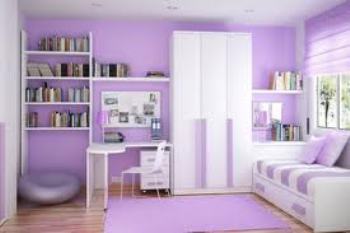Since there are school going children, many parents are thinking about children study room design where their children could do their homework in peace and quiet, and this place should be pleasing to the eye.
In case of you want to offer your children a study area, there are some things you should consider for a study room design. A study room for children needs good lighting, shelves, cabinets for storage, a board or cork board, or even two of them if you have not enough space to mention the study supplies.
When learning with the brain, oxygen is important. This air is fresh and the source could be a window or a fan. Also the child needs a comfortable chair in which he or she may have a good position and usually requires a lot of space to spread their roles.
In case you do not have a room that could become a study room for your child, then you can add desktops to the ends of bunks. Another idea would be to create a table of two file cabinets and also adds a desk that what can be found at local hardware stores. He or she can also use a height service bar, and all there is need for some chairs in which he or she could sit comfortably.
It is very important that the children feel comfortable with the study area. This can be achieved by offering a space that is their own and that has bright colors to support their creativity. There is also the need for space to put all the things they need with kids study room furniture. Offering the child a place to study or just to do some brainstorming is a great gift, and although children do not like to study, you can be sure that this would be something they like.
What most children study area has in common is a wealth of colors and images. This way you can be sure they do not get bored while learning because their brain has to work. Moreover, this learning a bit more fun. Add shapes, textures and patterns, as a chair of points and a wall decoration that has color.
There are no rules when it comes to decorating study room for children. The study room design has just to meet the children’s needs and tastes.

